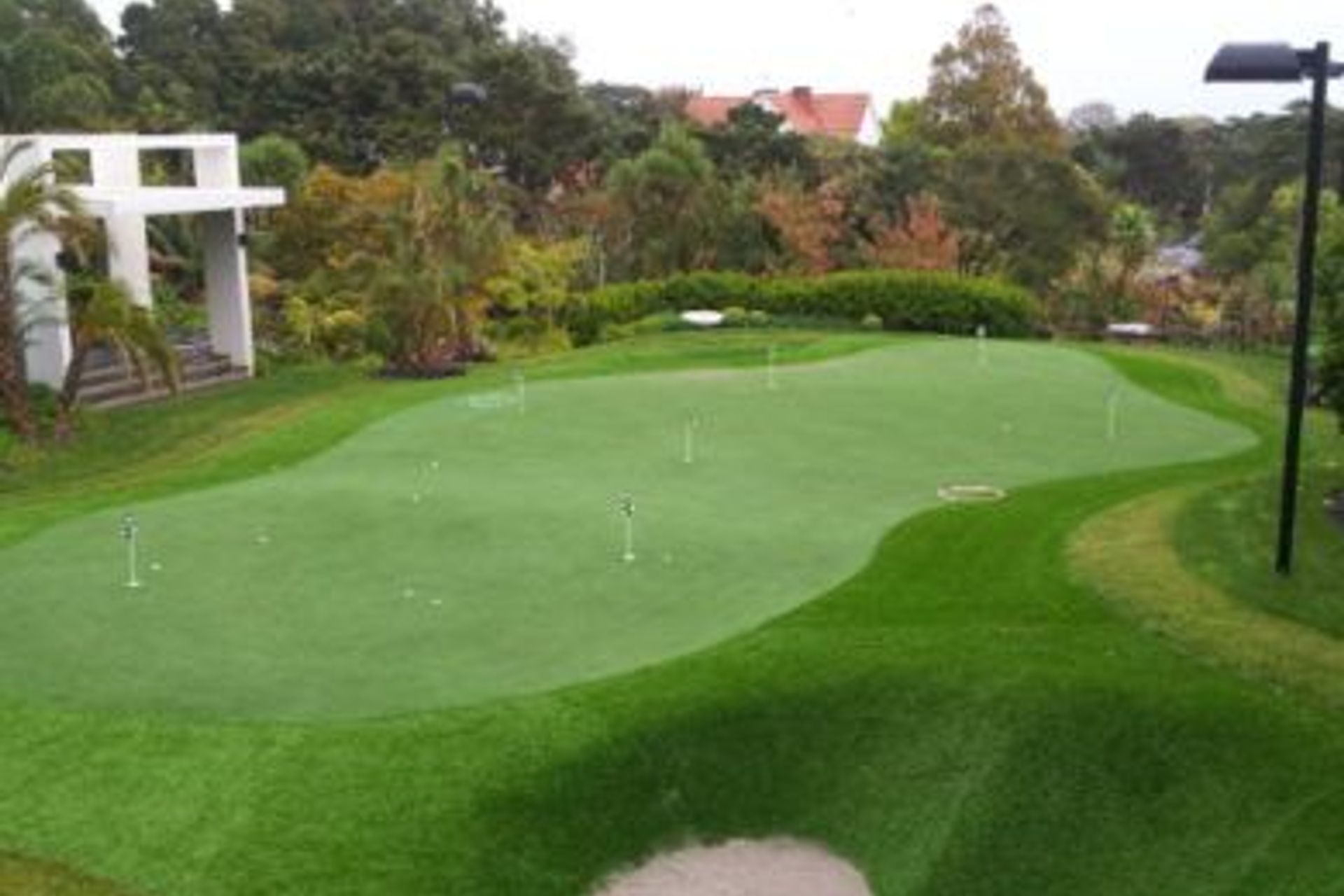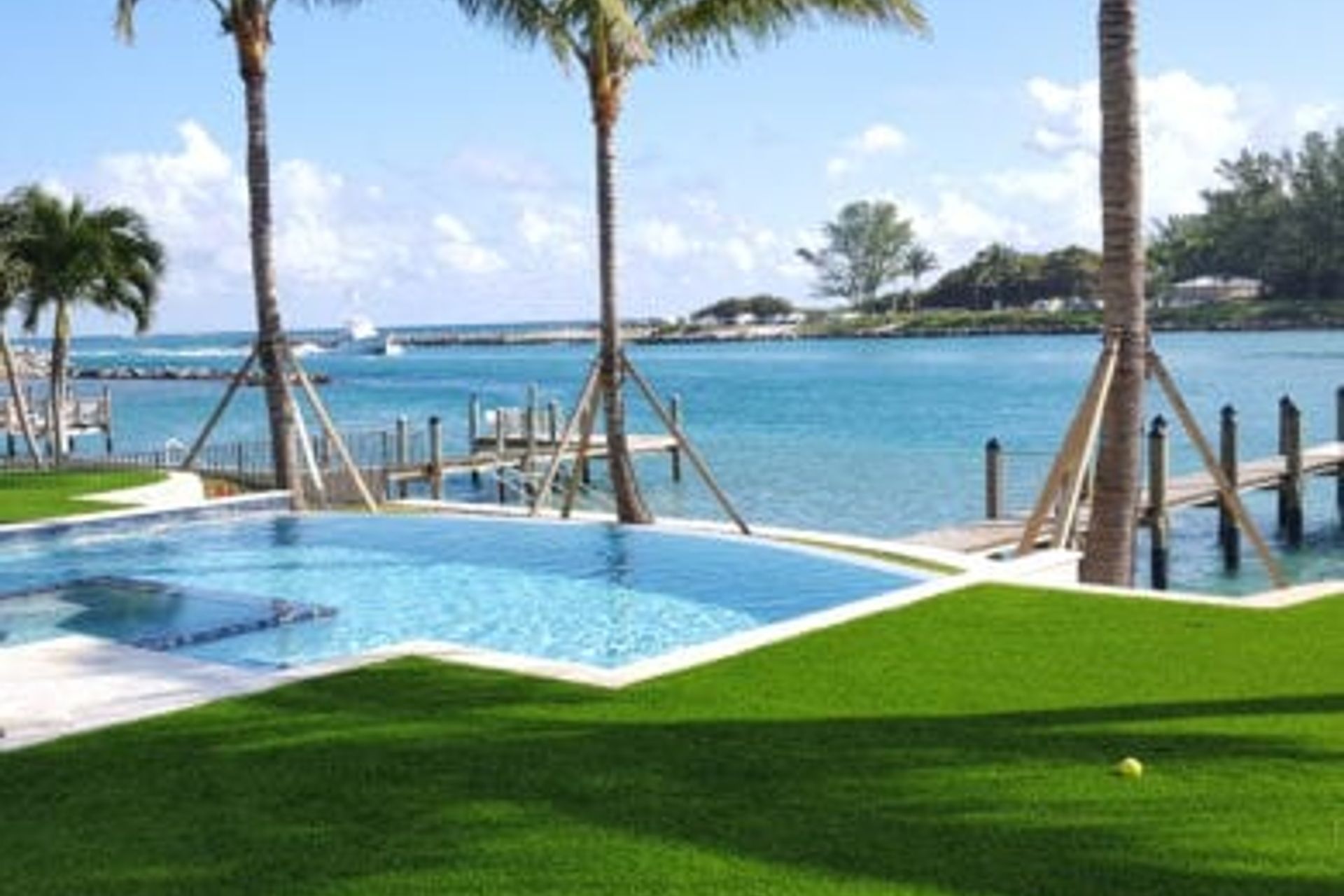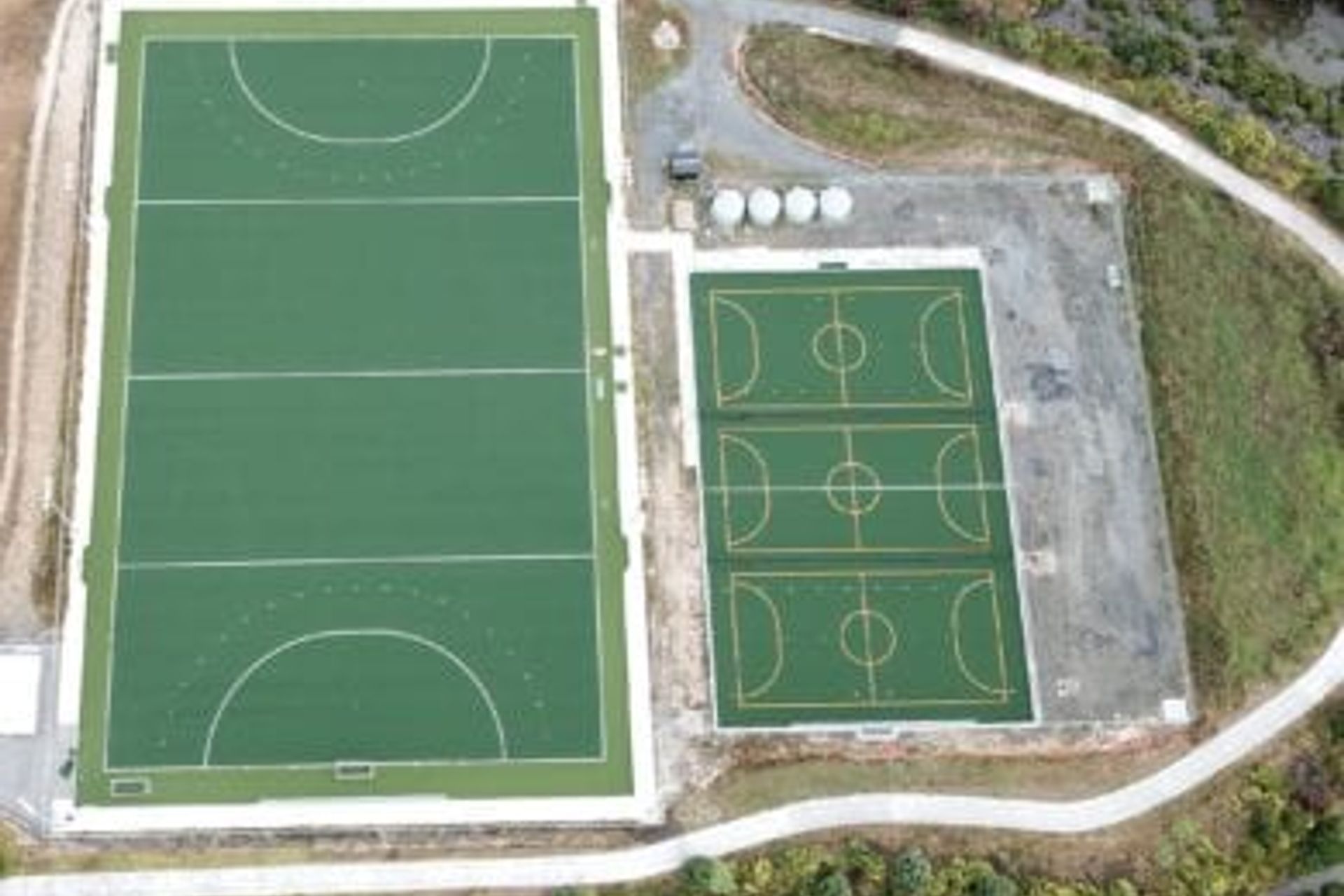Can Artificial Grass be Sustainable?

One of the big questions consumers have about artificial grass is whether it’s actually more eco-friendly than real grass. Opinions tend to be split – after all, our priorities are shifting towards a more sustainable future.
Kiwis and Aussies alike love year-round sports, and everyone wants a beautifully manicured lawn. Synthetic grass is an excellent solution: maximising the time spent enjoying the surface by minimising the time required to maintain it.
One of the biggest advantages of synthetic grass is that it can be used in so many different ways – landscaping, sports fields, balconies, gyms, pathways, and play areas, to name a few – but the question remains: can it be sustainably made?
In this article, we’ll dive into the ecological benefits of synthetic grass, and discuss how it compares overall to natural grass in terms of environmental impact.
What’s So Bad About Natural Grass?
You’d be forgiven for thinking that natural grass is the more environmental option – it’s natural, right? The truth is, it’s anything but.
A grass lawn or field is very much a human-made concept. When you go exploring in native bush areas, do you see any flat, perfectly manicured grasses? Probably not, and that’s because a well-maintained, grassed area requires a lot of work, as well as a lot of elements not found in the natural environment.
Why do we have lawns and fields?
Sure, back in the day there were clearings amongst the natural growth – areas exposed to sunlight and water, away from the shade of the forest floor, where wild grass would grow. Farmers would use these areas to graze their animals, who would leave behind natural fertiliser (yep, dung).

That’s natural. But it’s a little more difficult to pull off in the backyard of your residential townhouse – or indeed, in a sports field.
A perfect, grassy expanse began as a status symbol, and it turns out they existed so that the soldiers guarding castles had a clear view of their surroundings. It was a little bit about showing off, and a lot about practicality. But times have changed, and what we do with flat, grassy areas has changed as well.
What are the environmental impacts of natural grass?
There are some environmental benefits to natural grass. It soaks up moisture, stays cool, and provides a home for insects and birdlife.
But as we’ve discussed, natural grass doesn’t just happen. So what do we need to do in order to achieve grassy perfection?
Natural grass needs to be mowed, watered, and fertilised. These activities all impact the wider environment – as well as the insect and birdlife that natural grass ought to support.
Mowing natural grass
Mowing grass uses fossil fuels and contributes carbon dioxide into the atmosphere.
The environmental impact of your lawn mower may seem minimal, but, according to the EPA, the emissions from a 3.5 horsepower gas-powered lawn mower releases the same amount of air polluting emissions in one hour as a new car driven 340 miles (550 km).
Extrapolate that out to large areas of natural grass in parks, stadiums and schools, and the impacts quickly become significant.
Watering natural grass
During the warmer months, grass needs regular watering to prevent it from drying out.
In particular, sports grounds – which need to be kept consistent for play – need a lot of water during the summer and growing months in New Zealand and Australia.
Again, this might not seem like a big deal when it’s your backyard or front lawn, but everybody’s backyards and front lawns, plus all of the natural grass in stadiums, parks, and schools? That’s a fair amount of water.
Fertilizing natural grass
We all know that the runoff of toxic pesticides and fertilisers is a source of water pollution.
In fact, The EPA has identified runoff of toxic pesticides and fertilizers as the principal cause of water pollution. So, fertilisers can harm the earth more than help your lawn or football pitch.

So, in what ways is synthetic turf more environmentally friendly than natural grass?
The Ecological Benefits of Synthetic Turf
Artificial grass is made from synthetic materials – let’s get that out of the way right now. These materials do have an impact on the environment.
Even so, synthetic turf has a lot of positive environmental credentials when compared to natural grass. It is often promoted as being a ‘green’ alternative.
But what does this look like in real life?
Lower carbon emissions
We discussed the emissions from lawn mowing in the section above, and how when it’s done on a large scale, it can have a significant impact on the environment.
Of course, artificial grass is a clear solution to this issue because it doesn’t need mowing – end of story.
Water conservation
Grass needs water, that’s a given. This is where artificial turf surfaces have a major advantage over natural grass.
In most cases, you won’t need to water synthetic grass other than to clean it. Although there are some types of synthetic turf that do perform better when watered, this water usage is generally significantly less than that needed to irrigate and maintain natural grass.
Research in the US has shown that each full-sized rectangular artificial turf field saves between 1.8 million to 3.7 million litres of water each year.
Furthermore, artificial grass installations always include some form of drainage. Some users choose to collect water runoff from their synthetic turf in order to reuse it. Because it doesn’t absorb moisture the way that natural grass does, rainwater (and the water you use for cleaning it) can be saved for something else.

Eliminates the need for toxic pesticides and fertilisers
Again, pesticides and fertilisers may not seem like a big deal when used in your backyard or local sports field, but it all adds to the bigger picture.
It goes without saying that synthetic grass doesn’t need pesticides or fertilisers to keep it functional and looking good.
Is artificial grass recyclable?
End-of-life disposal often sees old turf end up in landfill.
We encourage our customers to try and re-sell, donate or recycle parts of the synthetic turf wherever possible. For example, often community groups can utilise different aspects of an elite playing surface that is being replaced.
At the end of the day, recycling the turf into other products and uses is always the best option, and there is ongoing research into better ways in which synthetic turf can be removed, cleaned, and reused, or components of it recycled.
Artificial grass is beginning to look pretty good when compared to natural grass – but can we do better? The answer is yes.
Artificial Grass Made From Recycled Materials
Technology is always advancing in the synthetic grass game, and manufacturers are always looking for ways to improve the materials and processes in a way that reduces environmental impact.
At TigerTurf, we’ve focused on reducing the environmental impact of our products by using recycled and recyclable components in our production.
TigerTurf Ecocept
TigerTurf Ecocept is a high-performance sports base layer made from 80-90% recycled plastic and rubber.
This product is the result of years of research by TigerTurf and TenCate grass to find a solution to recycling end of life synthetic turf and other plastic waste.

TigerTurf’s goal is to be a net neutral producer of plastic waste.
How do we do it?
- Any type of plastic can be used for Ecocept; it does not need to be a particular grade or of a particular composition.
- The rubber used is from old tyres that would otherwise end up in landfill.
- The synthetic turf, plastic waste and rubber tyres are re-processed into granules which are then mixed with a polyurethane binder and paved directly onto the sub-base, much like an asphalt road.
- TigerTurf’s Ecocept product can use the turf from three end of life hockey fields in one Ecocept base.
- The high permeability of Ecocept enables harvesting rainwater for re-use such as irrigation.
- Recycled rubber granules, made from recycled truck and car tyres, are often used in the base of synthetic turf as infill and for rubber shock pads.

Does Ecocept sound good to you? Get in touch and discover a truly greener option for sports and lawn surface.
